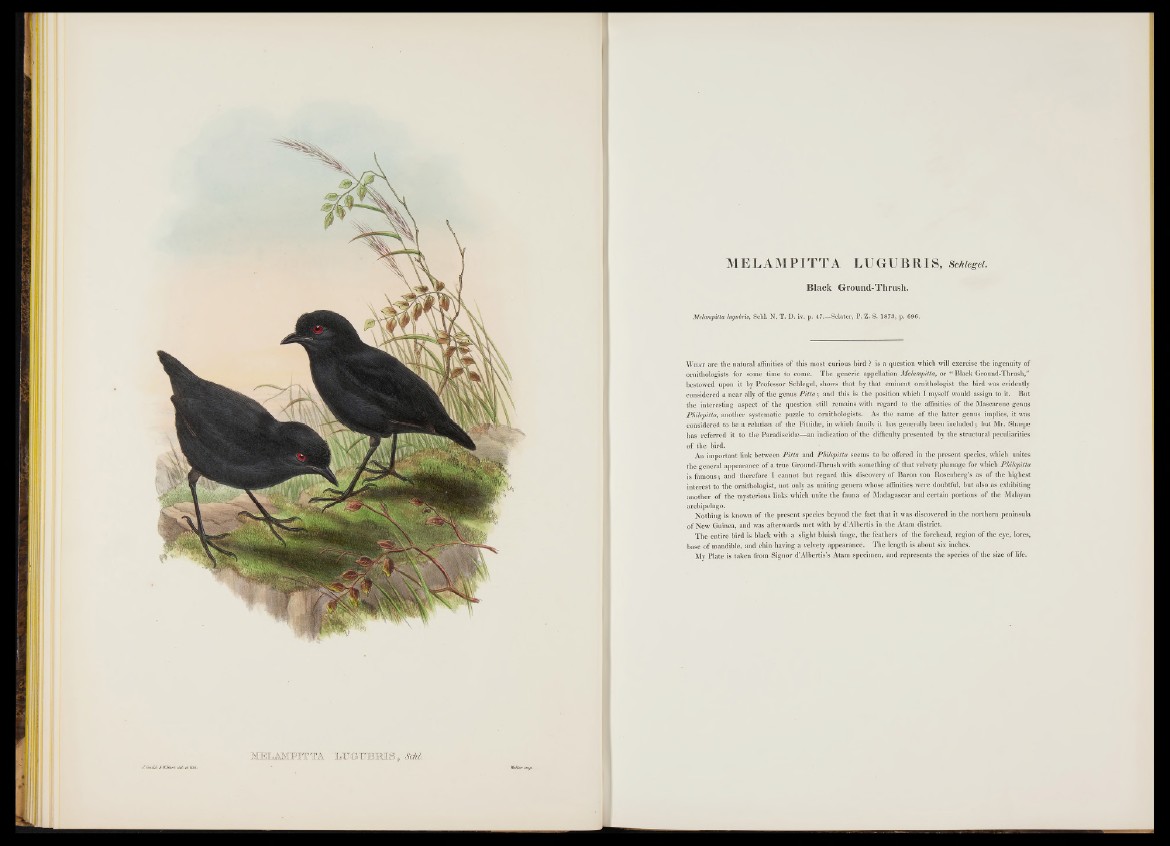
MELAMFITTA ' IilUGKJBKIS, SM.
ME LAM PITTA LUGUBRIS, Schlegel.
Black Ground-Thrush.
Melampitta lugubris, Schl. N. T. D. iv. p. 47.—Sclater, P. Z. S. 1873, p. 696.
W hat are the natural affinities o f this most curious bird ? is a question which will exercise the ingenuity of
ornithologists for some time to come. The generic appellation Melampitta, o r “ Black Ground-Thrush,”
bestowed upon it by Professor Schlegel, shows th at by th at eminent ornithologist the bird was evidently
considered a near ally of the genus P itta; and this is the position which I myself would assign to it. But
the interesting aspect o f the question still remains with regard to the affinities o f the Mascarene genus
Philepitta, another systematic puzzle to ornithologists. As the name o f the latter genus implies, it was
considered to § |§ a relation o f the Pittidse, in which family it has generally been included; but Mr. Sharpe
has referred it to the Paradiseidae—an indication o f the difficulty presented by the structural peculiarities
o f the bird.
An important link between Pitta and Philepitta seems to be offered in the present species, which unites
the general appearance of a true Ground-Thrush with something of that velvety plumage for which Philepitta
is famous; and therefore I cannot hut regard this discovery o f Baron von Rosenberg’s as o f the highest
interest to the ornithologist, not only as uniting genera whose affinities were doubtful, but also as exhibiting
another of the mysterious links which unite the fauna o f Madagascar and certain portions o f the Malayan
archipelago.
Nothing is known o f the present species beyond the fact th at it was discovered in the northern peninsula
of New Guinea, and was afterwards met with by d’Albertis in the Atam district.
The entire bird is black with a slight bluish tinge, the feathers o f the forehead, region o f the eye, lores,
base o f mandible, and chin having a velvety appearance. T h e length is about six inches.
My Plate is taken from Signor d’Albertis’s Atam specimen, and represents the species of the size o f life.